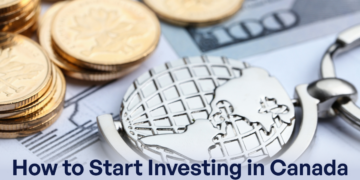Step by Step to Start Investing with Little Money

Understanding the Basics of Investing
Investing is often perceived as a complex endeavor, leaving many individuals feeling that it’s out of their reach. However, the truth is that anyone can embark on an investment journey, regardless of their financial situation. With a small budget, you can take actionable steps to secure your financial future. Understanding the essential principles and tools available will empower you to make informed decisions.
Educate Yourself
To begin your investment journey, it is vital to understand the basics of investing. Start with foundational concepts such as stocks, bonds, and mutual funds. For instance, stocks represent ownership in a company. When you purchase a stock, you become a shareholder and, potentially, benefit from the company’s profits through dividends and capital appreciation. In contrast, bonds are essentially loans you give to governments or corporations in exchange for periodic interest payments and the return of the bond’s face value upon maturity. Mutual funds pool money from many investors to purchase a diversified portfolio of stocks or bonds, reducing risks for individual investors.
Set Clear Goals
Another critical aspect is to identify your investment goals. Are you looking to save for retirement, buy a home, or fund your child’s education? Clearly defined goals help determine your investment strategy and time horizon. For example, if you’re saving for retirement in 30 years, you might opt for more aggressive investments like stocks. On the other hand, if you are saving for a down payment on a house within a few years, more conservative choices like bonds or high-interest savings accounts may be appropriate.
Create a Budget
Once your goals are established, it’s essential to create a budget that defines how much you can allocate towards investments. Even a small monthly contribution can significantly impact over time. For example, if you invest $100 a month into a low-cost ETF that averages a 7% return, over 30 years, you could accumulate over $100,000, demonstrating the power of compound interest.
Investment Platforms in Canada
Canada offers a range of user-friendly platforms that make investing accessible to everyone, regardless of their experience level. Here are a few examples:
- Robo-Advisors: Services like Wealthsimple and Nest Wealth provide automated investment management, making it easy for you to invest according to your risk tolerance and goals without needing extensive financial knowledge.
- Tax-Free Savings Account (TFSA): This account allows Canadians to grow their investments tax-free. Contributions to a TFSA can be withdrawn any time, making it a flexible option for reaching both short-term and long-term financial goals.
- Exchange-Traded Funds (ETFs): These low-cost investment options give you exposure to a diversified range of assets and can be traded like stocks on the stock exchange, making them an attractive choice for new investors.
The Importance of Taking Action
In conclusion, the most crucial step in investing is to take action. Starting, even with a modest investment, allows you to learn as you go and adapt your strategy over time. Remember, consistency is key; small, regular investments will accumulate and contribute to a more substantial financial future. With dedication and patience, your initial investments can grow, creating opportunities and financial stability for you and your loved ones.
Steps to Begin Your Investment Journey
Open Your Mind to Different Investment Options
With a multitude of investment options available, it’s important to research and familiarize yourself with the various types that suit your financial situation. Besides stocks and bonds, consider alternative avenues such as real estate crowdfunding, peer-to-peer lending, or even investing in small businesses through online platforms. Each of these options has different risk levels and potential returns, allowing you to diversify your portfolio effectively, even with minimal funds.
Start with a Solid Investment Strategy
Once you understand your investment options, it’s time to develop a strategy. Assess your risk tolerance, which is your ability to withstand market fluctuations. A common approach for beginners is the 80/20 rule, where 80% of your portfolio is invested in stocks (higher risk, but higher potential returns) and 20% in bonds (lower risk). You may also want to consider dollar-cost averaging, which involves investing a fixed amount regularly, regardless of market conditions. This strategy reduces the impact of volatility and allows you to buy more shares when prices are low.
Utilize Low-Cost Investment Vehicles
When you’re working with limited funds, choosing low-cost investment vehicles can significantly enhance your returns. Look for options like:
- No-fee brokerage accounts: Many online brokerages in Canada, such as Questrade, offer no-commission trading for stocks and ETFs, enabling you to keep more of your investment gains.
- Dividend Reinvestment Plans (DRIPs): These allow you to reinvest dividends automatically, purchasing more shares of a stock over time without incurring additional fees.
- Index funds: These funds attempt to replicate the performance of a specific market index, typically with lower fees compared to actively managed funds.
Practice Regular Monitoring
After you’ve made your initial investments, monitor your portfolio regularly to ensure it aligns with your goals and risk tolerance. Set specific intervals, such as quarterly or semi-annually, to review your investments. Make adjustments as needed, but avoid making impulsive decisions based on market fluctuations. Remember, investing is a marathon, not a sprint, and staying informed will help you make rational choices.
Seek Out Community and Resources
No one needs to go through investing alone. Engage with online communities or forums, such as those on Reddit or investment-focused Facebook groups, where you can ask questions and share experiences with others. Additionally, take advantage of educational resources, such as webinars, podcasts, or even local workshops, which can provide valuable insights into navigating the investment landscape.
Building Your Investment Skills
Educate Yourself Continuously
In the world of investing, knowledge is your best ally. Use free or low-cost resources to educate yourself on various investment strategies and market trends. Websites like Investopedia or Morningstar offer a wealth of information, ranging from beginner guides to advanced investment concepts. Consider enrolling in free online courses through platforms such as Coursera or edX, where you can learn at your own pace and gain a deeper understanding of financial management and investment principles.
Set Clear Financial Goals
Your investment strategy will significantly benefit from having clear financial goals. Are you investing for retirement, a down payment on a house, or simply to grow your wealth? Define your objectives and consider creating a timeline for achieving them. For example, if you want to purchase a home in five years, allocate a portion of your investment funds towards a high-yield savings account or short-term investments that can be liquidated when you are ready to buy. Setting specific targets not only provides motivation but also helps you stay focused when making investment decisions.
Leverage Robo-Advisors
Robo-advisors are a great option for new investors who may not feel ready to make investment decisions on their own. These online platforms, such as Wealthsimple or Questrade’s Questwealth Portfolio, create customized portfolios based on your financial situation, risk tolerance, and goals. They typically charge lower fees than traditional advisors, making them accessible for those starting with small amounts of money. Moreover, robo-advisors often automate rebalancing and dividend reinvestment, allowing you to grow your investment effortlessly over time.
Embrace a Long-Term Perspective
Investing is often fraught with immediate temptations and market noise, but maintaining a long-term perspective is crucial. Statistics show that the stock market tends to rise over a long period. For example, historical data from the S&P/TSX Composite Index indicates that, despite short-term volatility, the market value has generally increased after several decades. By adopting a long-term view, you can avoid panic-selling during downturns and position yourself for better gains as the market recovers.
Understand the Tax Implications
Being aware of the tax implications of your investments can significantly impact your overall returns. In Canada, tax-efficient accounts like the Tax-Free Savings Account (TFSA) or the Registered Retirement Savings Plan (RRSP) allow your investments to grow tax-free or tax-deferred. When investing within these accounts, you will not pay taxes on your capital gains or interest earned until withdrawal in the case of the RRSP. Knowing how to effectively use these accounts can enhance your investment outcomes.
Regularly Contribute to Your Investments
Consistency is key when it comes to investing, especially when starting with little money. Automate your contributions to your investment accounts, even if it’s a small amount each month. This discipline, known as habitual investing, helps you take advantage of dollar-cost averaging and build your portfolio over time. As you receive raises or bonuses, consider increasing your contributions. Over time, consistent investments can lead to significant wealth accumulation.
Conclusion
Starting your investment journey with little money is not only possible but can also be a rewarding experience when approached thoughtfully. By educating yourself continuously through various resources, you’ll build a solid foundation of knowledge that will inform your decisions. Setting clear financial goals tailored to your life aspirations—such as saving for a home or retirement—will keep your focus sharp and provide motivation as you navigate the investment landscape.
Utilizing robo-advisors can simplify the process and reduce stress, allowing you to engage with investments without needing extensive expertise. Likewise, embracing a long-term perspective is essential. Remember, the stock market has historically rewarded those who remain patient through its ups and downs. This approach can help you sidestep emotional decision-making during market fluctuations.
Be mindful of the tax implications surrounding your investments, and take advantage of tax-efficient accounts like the Tax-Free Savings Account (TFSA) and Registered Retirement Savings Plan (RRSP) to maximize your returns. Finally, adopting habitual investing, by making consistent contributions, even if small, will help you build a meaningful portfolio over time.
In summary, by implementing these strategies, you can effectively begin investing, even with modest amounts. Each small step you take can lead to significant growth in your financial future, so take the plunge and start today. Remember, investing is a marathon, not a sprint, and patience is key to achieving your financial dreams.

Linda Carter is a writer and financial consultant specializing in economics, personal finance, and investment strategies. With years of experience helping individuals and businesses make complex financial decisions, Linda provides practical analyses and guidance on the World Information Now platform. Her goal is to empower readers with the knowledge needed to achieve financial success.






